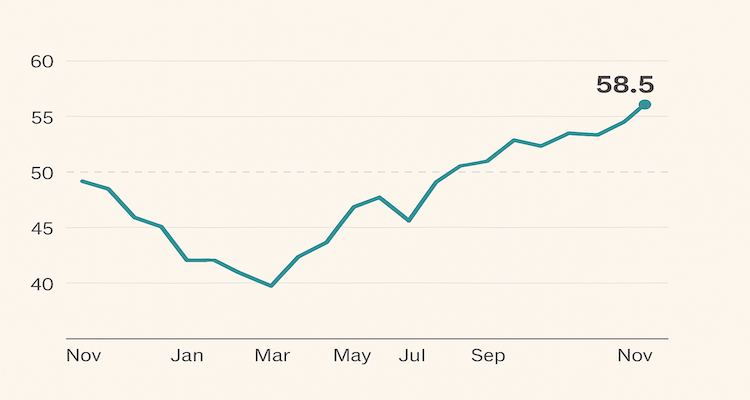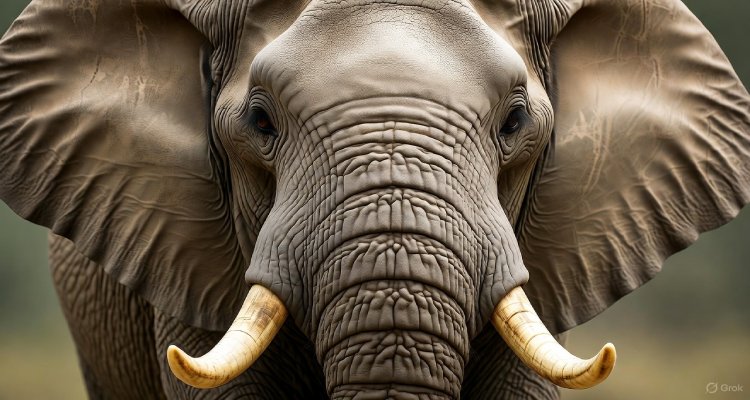India’s Wild Elephant Numbers Drop by 18% to 22,446
New DNA-based survey reveals habitat fragmentation, rising conflicts, and urgent need for conservation action
India’s wild elephant population has dropped to 22,446, an 18% decline from 2017. A first-of-its-kind DNA-based survey reveals alarming habitat loss and rising human-elephant conflict.
Introduction: The Vanishing Giants
India’s wild elephants — revered, intelligent, and deeply intertwined with the country’s natural and cultural heritage — are quietly disappearing. A new nationwide survey has estimated the population of wild elephants at 22,446, marking an 18% decline from the last official count in 2017. The findings underscore growing threats to Asia’s largest land mammal, from shrinking habitats and infrastructure expansion to the escalating human-elephant conflict that now defines much of India’s wildlife landscape.
Context & Background: Guardians of Asia’s Elephants
India is home to over 60% of the world’s remaining Asian elephants, making its conservation efforts critical for the species’ global survival. Conducted under the All-India Synchronous Elephant Estimation (SAIEE) 2025, the new survey estimates India’s elephant population between 18,255 and 26,645, averaging 22,446.
Unlike earlier headcounts, this assessment — released by the Ministry of Environment, Forest and Climate Change on October 14 — employed cutting-edge DNA-based methods. While the figures cannot be directly compared to 2017 due to methodological shifts, the results establish a scientific baseline for future monitoring and policy planning.
The Wildlife Institute of India, under Project Elephant, spearheaded this pioneering effort to modernize wildlife estimation and improve accuracy — moving beyond the traditional dung-counting approach to a genetic, evidence-based model.
Main Developments: The DNA Revolution in Wildlife Tracking
For the first time, India’s elephant census harnessed the power of DNA fingerprinting — analyzing 21,056 dung samples collected from across the country’s elephant landscapes. Through genetic analysis, scientists identified 4,065 unique elephants, applying the mark-recapture model to estimate total population size.
The exercise unfolded in three phases:
- Ground Surveys: Forest teams traversed 6.7 lakh km of forest trails, logging elephant signs through the M-Stripes app, an advanced wildlife tracking tool.
- Habitat Mapping: Satellite data evaluated vegetation quality, water sources, and human encroachment across elephant corridors.
- Genetic Analysis: DNA extracted from dung samples provided an accurate count of individuals — a milestone in wildlife conservation science.
These combined methods represent a paradigm shift in how India tracks and protects its iconic species, setting a precedent for future conservation programs across Asia.
Region-Wise Findings: The Geography of Survival
The survey revealed sharp regional disparities.
- Western Ghats remain India’s last great elephant stronghold with 11,934 elephants, though fragmentation threatens their long-term viability.
- The North Eastern Hills and Brahmaputra floodplains host 6,559 elephants, followed by the Shivalik Hills and Gangetic plains with 2,062, and Central India and the Eastern Ghats together with 1,891.
At the state level, Karnataka leads with 6,013 elephants, followed by Assam (4,159), Tamil Nadu (3,136), Kerala (2,785), and Uttarakhand (1,792). Smaller populations persist in Odisha (912), Arunachal Pradesh (617), Meghalaya (677), Nagaland (252), and Tripura (153) — while Madhya Pradesh (97) and Maharashtra (63) support fragmented, isolated herds.
The once-contiguous elephant corridors of the Western Ghats are being rapidly severed by commercial plantations, farmland fencing, invasive plants, and urban projects, impeding elephant movement and intensifying human-wildlife conflict.
Expert Insight: Science Meets Survival
Wildlife biologists have hailed the DNA-based estimation as a scientific leap forward, offering unprecedented precision and insight.
Dr. Ramesh Kumar of the Wildlife Institute of India emphasized that “the DNA-based methodology gives us confidence in population estimates while highlighting how fragmented elephant habitats have become. This is not just a number; it’s a map of where elephants can and can’t live anymore.”
Conservation experts warn that without restoring habitat connectivity and curbing linear infrastructure expansion — such as roads, railways, and power lines — India risks losing its role as a global stronghold for Asian elephants.
Impact & Implications: The Rising Human-Elephant Conflict
As elephants lose access to forests and corridors, they are increasingly venturing into human settlements and farmlands, leading to rising conflict in several states. The report identifies electrocution, train collisions, and habitat fragmentation as major causes of elephant fatalities.
In Central and Eastern India, unregulated mining and industrial projects have further deteriorated natural habitats. In the Northeast, historical exploitation of fertile floodplains and rapid land-use change have fragmented herds, isolating them into smaller pockets amid tea gardens and human settlements.
Experts call for urgent measures including:
- Strengthening wildlife corridors and enforcing land-use zoning.
- Implementing mitigation measures for linear infrastructure and power lines.
- Expanding community-based conservation and fair compensation policies.
- Enhancing law enforcement against poaching and illegal land encroachment.
Without inclusive policies that address both elephant and human well-being, the conflict could deepen, jeopardizing conservation gains.
Conclusion: Protecting India’s Living Heritage
India’s wild elephants are not just wildlife — they are symbols of harmony, intelligence, and endurance. Yet their survival now hangs in the balance. The new DNA-based survey provides a powerful scientific foundation, but it also sounds an alarm: habitat loss and human pressure are eroding the heart of India’s elephant landscapes.
Safeguarding these gentle giants requires science-backed policy, inter-state collaboration, and deep community engagement. The path forward lies in restoring connectivity, enforcing protection, and rekindling coexistence — ensuring that the next generation inherits not empty forests, but the echoing trumpet calls of elephants still roaming free.
Disclaimer: This article is based on the findings of the All-India Synchronous Elephant Estimation (SAIEE) 2025 and official data from the Ministry of Environment, Forest and Climate Change. Interpretations are intended for journalistic and educational purposes.











